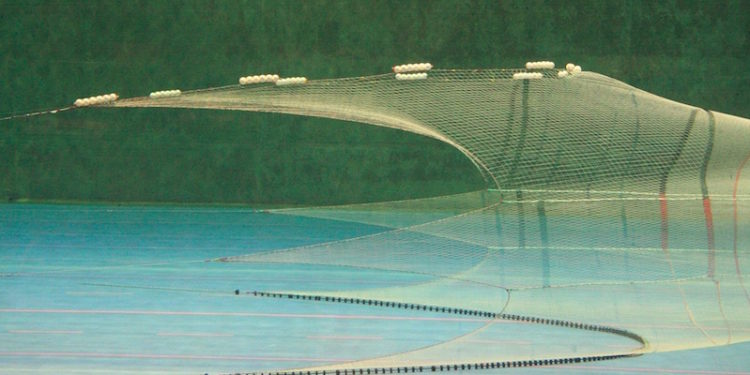A week-long fishing gear technology course is to be held at the North Sea Centre flume tank in October, with instructors Ulrik Jes Hansen of CATch-Fish and Seafish’s Mike Montgomerie going through a myriad of detailed information for a group of between twelve and twenty.
‘The course is designed for anyone who in their professional life is involved with towed fishing gear in industry, service industry or research roles,’ Ulrik Jes Hansen said.
‘These are fishing masters and fleet managers, net and trawl door designers and manufacturers, fisheries biologists and technicians, fisheries college lecturers or instructors, persons who have recently started working as fishing gear technologists or researchers and other persons who want a general introduction to the design and operation of modern commercial fishing trawls.’
He said that a basic knowledge of fisheries and fishing gears is a prerequisite and the course takes the form of theoretical lectures and practical sessions using the flume tank.
‘Our objective of the course is to give the participants an enhanced understanding of trawl performance in practice, both from an engineering, biological and a management point of view. Catch efficiency, fuel consumption, bottom impact, species and size selectivity are all important topics for an optimal use of trawls and keywords for the course.
The participants will study different commercial trawl designs in the flume tank and learn how the performance and efficiency of the gear is influenced by changes in net specification, rigging and towing speed,‘ he said.
‘This information will help the participants to select different nets for different fisheries, and assist them in maintaining the trawl.
The participants will be informed of the ongoing research within this field that relates to fish resource management and sustainability, such as development of species selective gears, measurement and improvement of codend selectivity, as well as environmental impact of fishing gear.’
Scheduled for 30th October to 4th November, the course runs from midday on Sunday to midday on Friday and takes in demonstrations of the design, performance and operation of trawls using scale models in the North Sea Centre flume tank. Introduction to gear research topics like energy savings, raised (or pelagic) trawl doors, computer aided design and simulation of trawls, use of new materials, trawl door design and performance are part of the package. The existing knowledge of fish behaviour in and around the trawl illustrated by means of underwater video recordings taken at sea by cameras mounted on towed underwater vehicles observing trawl performance.
Review of selectivity in fishing gear in general and trawl gear in particular, and possibilities to change the selectivity pattern by altering use and operation, design parameters, construction, etc. Demonstration of various selection devices like grids, sorting panels and windows. Information on gear selectivity characteristics including: influence of cod-end design parameters on fish size selection and utilization of fish behaviour differences to achieve species separation.
Other important aspects of trawl fishing operations: gear legislation (technical regulation measures), requirements for catch quality assurance and hygiene on board fishing vessels, fuel reduction are all possible subjects for the course, which traditionally ends with a banquet for the participants.
‘Whether you are fishing with trawl gear, managing a fleet, selling trawls, teaching students about them or you are using them as a sampling tool or a research object you are likely to gain from the course and get a new perspective on this often controversial fishing gear,’Ulrik Jes Hansen said.
For further information, prices, availability and an application form, visit the CATch-Fish website









